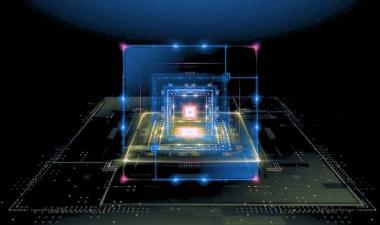Huawei Strikes Back: What TechInsights found, how it did it, why it matters, and what it means

G. Dan Hutcheson
The Chip Insider®
Summary:
Huawei Strikes Back: What TechInsights found, how it did it, why it matters, and what it means.This smartphone is important, because Huawei's position in the smartphone market dropped sharply over the last five years… In 2019, Huawei was the second-largest smartphone supplier, positioned between Samsung and Apple. Currently, they are 10th… If we start at the beginning, a Huawei Mate 60 Pro arrived in our Ottawa offices less than a week after it was available in China. Stripping away the epoxy to reveal the die, the team found a newly manufactured Kirin 9000s APU, concluding that certain features on the die had the fingerprints of SMIC’s manufacturing process… So, how did we conclude SMIC produced the Huawei/Kirin chip?
As for the chip itself, the Kirin 9000s is a 7nm finFET CMOS device with multiple DTCO features that give it a shorter cell height and standard cell area compared to SMIC's N+1 version, hence TechInsights’ designation of it as a 7nm N+2 process. It uses multiple layers of dual-damascene copper interconnect… Compared to the Kirin 9000 chip … Pitting it against Apple and Samsung, this device is two to two-and-a-half generations behind… a 7nm process without EUV: As a technology centric industry analyst, it’s been surprising see the legions of people who thought it was impossible or impossible to do economically. It’s absolutely possible! … One of the key mistakes most people make is to believe all DUV systems are the same…
As for the current level of China’s semiconductor technology leadership, it depends on the technology that's being considered: If it's foundry logic, it's two to two-and-a-half generations behind… If it's memory… In terms of design…
Are US semiconductor sanctions against China failing? … Today, Chip R&D is very much a globalized project, because… This is why the chip industry became globalized soon after the semiconductor was discovered in Allentown, Pennsylvania at AT&T Bell Labs. It quickly spread... In the early-1970s, Japan’s visionaries at MITI saw that semiconductors would become the “rice” of the future, launching its VLSI program… In the end the only thing that stopped Japan’s chip giants in the nineties was that others ran faster. The problem with sanctions is that they limit the market access of technology leaders, starving them of the R&D funds that are the energy bars that allow them to run faster…
"What you do in life echoes in eternity” — From the Movie “The Gladiator”
If you want to read the full article, click here.
Free Newsletter
Get the latest analysis of new developments in semiconductor market and research analysis.
Subscribers can view more articles in the TechInsights Platform.
You must be a subscriber to access the Manufacturing Analysis reports & services.
If you are not a subscriber, you should be! Enter your email below to contact us about access.









